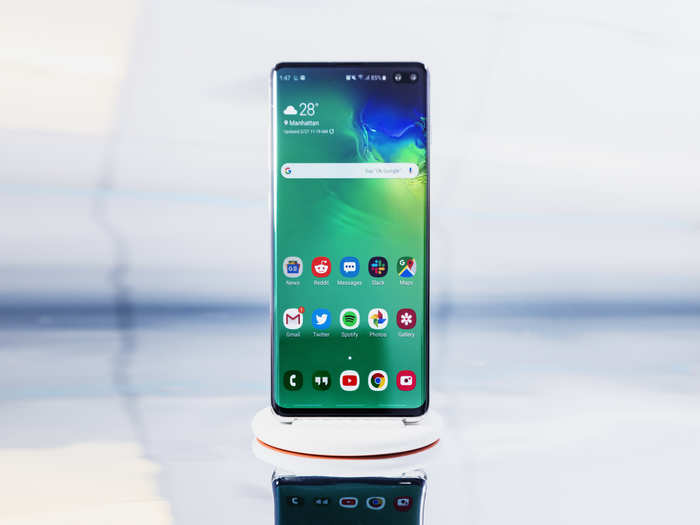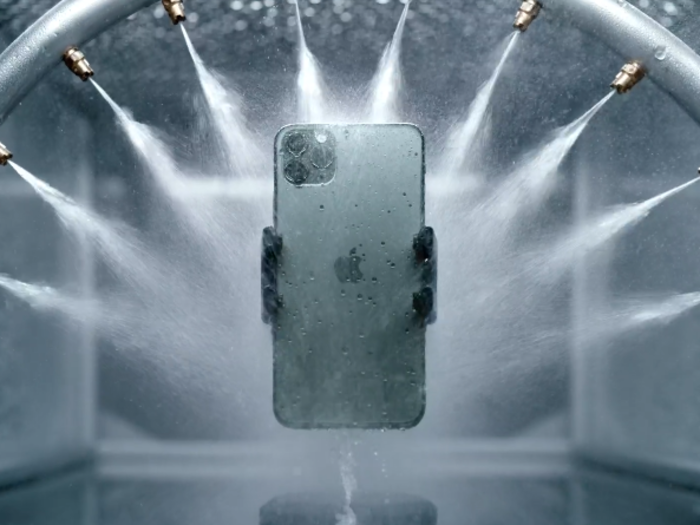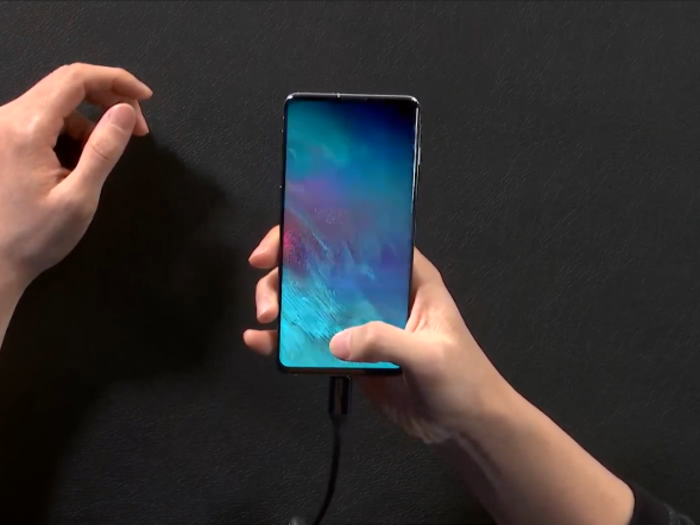- Home
- slideshows
- miscellaneous
- How Apple's new iPhone 11 Pro compares to its biggest rival, Samsung's Galaxy S10
How Apple's new iPhone 11 Pro compares to its biggest rival, Samsung's Galaxy S10
Camera

Display

The Galaxy S10 has a 6.1-inch screen that's slightly larger than the iPhone 11 Pro's 5.8-inch display. It's also sharper than Apple's iPhone, or at least it should be on paper. The Galaxy S10's display has a resolution of 3040 x 1440, packing 550 pixels per inch, while the iPhone 11 Pro has a resolution of 2436 x 1125 with 458 pixels per inch.
But having a higher resolution doesn't always mean one screen is better than the other. While the displays on Samsung's phones are usually vibrant and full of bold color, I sometimes find in that colors generally look more realistic on the iPhone. It's impossible to tell which phone offers a better viewing experience without spending a significant amount of time with each of them, however.
Design

The iPhone 11 Pro and Galaxy S10 may share some similarities when it comes to their cameras, but Apple and Samsung have taken noticeably different approaches when it comes to design.
The most evident of these discrepancies involves the devices' screens. The iPhone 11 Pro still has a notch cutout near the top of the display for the selfie camera and facial-recognition sensors, much like the one that debuted on the iPhone X two years ago. It hasn't changed much, if at all, since 2017.
Samsung has done more to push the design of its flagship smartphones forward with the "Infinity O" displays on the Galaxy S10 and Note 10 lineup. This new display makes it look like Samsung simply punched a hole in the device's screen where its front-facing camera sensors are situated, creating the illusion that the display truly stretches from edge to edge. It's an aesthetic that's much sleeker and minimalist than Apple's, making the iPhone's notch feel all the more intrusive.
It's not just the way the phones look from the front that differentiates them from one another. The backside of these devices also look and feel distinctively different. The iPhone 11 has a new matte textured back that I imagine could give it two important advantages: it's easier to grip, and it's less prone to fingerprint smudges. The Galaxy S10, comparatively, has a glossier, shiny back that feels more fragile.
The iPhone 11 Pro, however, is also a bit heavier than the Galaxy S10. It weighs 188 grams, while the S10 weighs 157 grams.
Storage Options

The iPhone 11 Pro comes in three storage options (64GB, 256GB, and 512GB), while the Galaxy S10 only comes in two (128 GB, 512GB). The catch, however, is that if you're opting for the cheapest model, you get twice as much storage with the Galaxy S10 (128GB with the S10 versus 64GB with the iPhone). Samsung's phone also has a microSD card slot that allows you to add an extra 512GB of removeable storage to the phone.
The Samsung Galaxy S10 is also a bit cheaper than the iPhone 11 Pro, since the 128GB entry-level configuration starts at $900 while the 64GB iPhone 11 Pro costs $1,000.
Durability

The iPhone 11 Pro is better equipped to withstand water damage than the Samsung Galaxy S10. Apple's new iPhone can weather being submerged in up to four meters of water for up to 30 minutes, while the Galaxy S10 can survive after being dunked in up to 1.5 meters of water for up to 30 minutes.
Extra Features

Samsung's Galaxy S10 also offers a few extra features that the iPhone doesn't, such as an in-screen fingerprint reader, an always-on display that can show information like the time and battery life while the display is off, and reverse-wireless charging. That last feature allows you to charge accessories like wireless earbuds or a smartwatch simply by resting them on the back of the phone, which could come in handy when you're not near an outlet.
One of the big benefits that come with Apple's products, by contrast, is how seamlessly they all work together. One of the best examples of this is the way your AirPods automatically pair with your iPhone as soon as you flip open the lid, and the way they automatically pause music when you take one AirPod out of your ear. Some competitors have copied this approach in recent years, but Apple pioneered it.
Popular Right Now
Popular Keywords
Advertisement